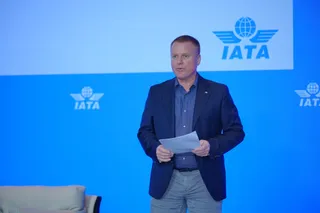ICAO NGAP Global Summit
Contact Our Team
For more information about how Halldale can add value to your marketing and promotional campaigns or to discuss event exhibitor and sponsorship opportunities, contact our team to find out more
The Americas -
holly.foster@halldale.com
Rest of World -
jeremy@halldale.com

ICAO recently hosted the first NGAP Global Summit conference at its home in Montreal, Canada. Chris Long reports.
In her keynote speech, the Secretary General of ICAO, Dr. Fang Liu, put this event in context by emphasising the critical importance of the global air transport network. It serves as the catalyst for global economic development as part of the United Nations Agenda 2030 Sustainable Development Goals.
To scope the scale of the industry, it is helpful to consider that some 10 million passengers are carried daily on over 100,000 flights. This sector supports 63.5 million jobs globally, fully one third of world trade by value, and contributes more than 2.7 trillion dollars annually to GDP. Aviation transports over half of the 1.4 billion tourists who travel internationally, thus establishing a veritable economic lifeline for many cities, States and Regions. Add to those figures the widely-acknowledged fact that this industry is expected to double in the next 15 years.
The forecast shrinkage of the working population, due to the demographics of ageing populations, lowering birthrates and other attrition factors, mean that providing sufficient aviation specialists is already challenging. Any brake on that predicted growth will have an immediate impact on global trade, passenger expectations, and economic strength. Consequently nation states need to recognise and meet this challenge, but the solution must involve other partners, like UNESCO, universities and the industry itself.
The task of achieving that sustained, safe and efficient growth will naturally fall to the Next Generation of Aviation Professionals (NGAP) and the intensity of the effort required means that we have to attract the brightest and best of those. That may not be easy, given the extravagant range of opportunities in other leading-edge industries, so we must be pro-active.
Commitment to NGAP
What is abundantly clear is that Dr. Liu is whole-heartedly committed to the ICAO NGAP programme. This shows not only in the drive to create this Global Summit, but, perhaps even more significantly, the inclusion of Millennials (as Young Aviation Professionals - YAPs) not just directly into the conference as speakers, but also as delegates and engaged participants. The energy created by the presence of that generation who are already involved in the business, together with the presentations which some of them made, lifted the conference to a level not routinely seen in the sometimes dry conferences held in such surroundings.
Starting Early
Not least in the process of addressing the shortage of pilots, air traffic controllers and technicians, is the focussed effort on involving women in these disciplines, as shown in the attention to the STEM initiatives. Nowhere was this more obvious than in the separate group of young female pupils sponsored by UNESCO. These unique UNESCO workshops are conducted globally, and aim to encourage more young women to consider STEM careers, and especially those which are engineering related. The intention is also to alleviate any daunting preconceptions young girls may have towards these careers, for instance images of men in hard hats.
This year’s UNESCO Think Pink Hardhat workshop at ICAO was featured at this conference, which attracted more than 500 education and aviation sector leaders to ICAO to explore new means of attracting and retaining the best and the brightest to operate and manage the air transport network in the decades ahead.
Millennials to the Fore
Once again the common theme was that, generally speaking within the global education systems, there is little promotion of the industry as a legitimate career option. Most of those who had become YAPs had received some early introduction, be it through a family connection/passion, or because of close proximity to an airport or some part of the aviation industry. Whilst that is fine for those privileged to have such launch platform, it is not enough of itself to gather in enthusiastic new players. The barrier of high cost of entry was frequently commented on as something that pushes potential recruits away to other more accessible careers. As has been noted before in other venues, the primary motivator of financial reward - so often a key driver for earlier generations - is now tempered with the desire to be involved in something perceived as worthwhile and able to make a difference. The lesson, yet again, is that the industry has to be pro-active and engage the wider younger generation very early on, and show the benefits and interaction of this vibrant career option.
Technology
One important attraction is the use of new technology, not just in the industry itself, but as part of the training process. In a series of presentations the importance of using relevant and engaging training technology was clearly illustrated. The oft-quoted short attention span of new players, aligned with the absorption in multi-tasking and the attraction of just-in-time training, drives training providers to seek adapted training solutions. These facilitate self-study and micro-learning, in which short learning packages can be wrapped into mobile and accessible platforms better suited to these new learning habits. Part of that course design draws on the world of gaming, and comes very naturally to the new patterns.
The other major development, still ongoing, is the integration of virtual or augmented reality as a norm for training. The fascinating advantages of these options - banishing forever the “death by PowerPoint” of boring classrooms - allows (if necessary) a widely-dispersed group of students to be linked to, and to share in, a single lesson on a specific topic in a way that fully engages the imagination and interest.
Cooperation
Given the global drive to demonstrate career opportunities to young people, the future teaming of UNESCO and the ICAO NGAP will bring a new dimension to the whole education and recruiting dynamic. Marie-Paule Roudil, director of UNESCO, is an enthusiastic proponent of the example of role models for young women.
The importance of STEM subjects is such that it must be vigorously fostered, and the creation of programmes such as the Airbus “Fly Your Ideas” competition (which involves some 15,000 students, 600 universities and 100 countries) was cited as the sort of initiative which should help to show the career pathways that are open to Millennials and Generation A (those born from 2010 onwards). The imminent signing of a “Letter of Intent” between UNESCO and ICAO shows the high level of commitment between these two UN bodies, and will potentially lead to closer cooperation in the search for that new generation of aviation professionals.
Working with ICAO, SECA (Student Education and Careers in Aviation) will be held on April 19th at the Rosen Shingle Creek Resort in Orlando, Florida. The conference will shed light on the importance of the aviation industry, along with educating young people and Young Aviation Professionals (YAPs) on the various career possibilities open to them. In addition, SECA will look at the importance of STEM subjects and the added involvement of women in these disciplines. SECA will bring in speakers from ICAO, Women in Aviation, and various other sectors of the industry along with providing the opportunity to explore all the latest technology on the World Aviation Training Summit (WATS) exhibition floor.
Published in CAT issue 1/2018


.png/r%5Bwidth%5D=320/7f2021f0-9a0d-11f0-b8f7-272ce5993c28-nano-banana-2025-09-24T11-07-03%20(1).webp)